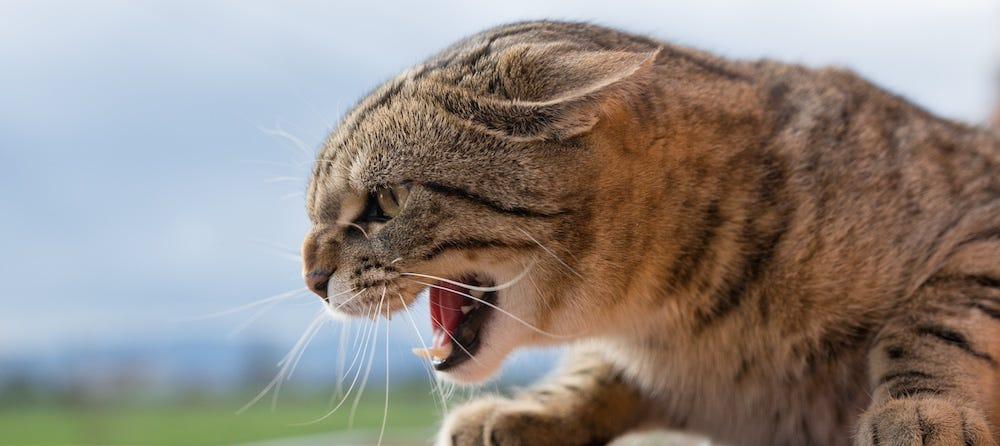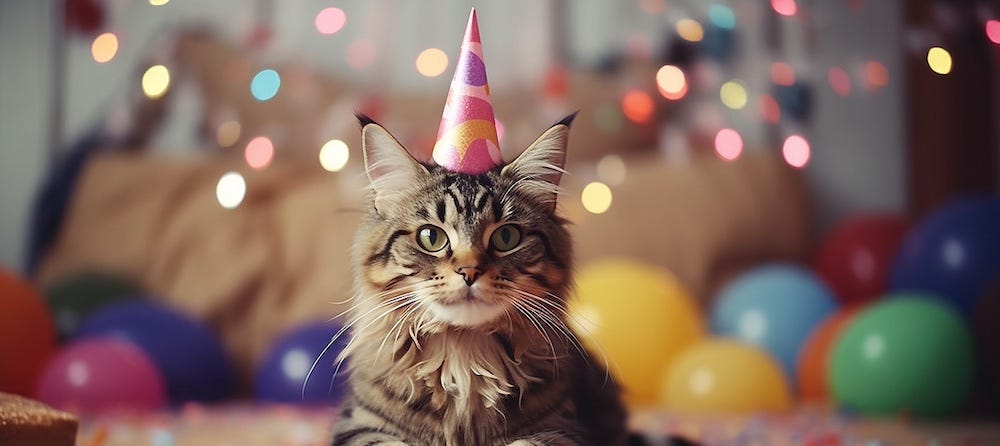Cats are carnivores by nature. They use their teeth to hunt, kill, and eat, as well as to groom and protect themselves as a method of self-defense. Their teeth are essential and help them thrive in many different ways. In this article, we will cover how to brush your cat's teeth, the reasons to brush their teeth, some alternatives to brushing their teeth, and answers to a few of the most common questions. Read on to learn about the benefits of brushing your cat’s teeth!
Why should you brush your cat's teeth?
Cats are susceptible to a variety of oral health problems, including gingivitis, severe tooth pain, inflammation, and infection. In some cases, these issues may require oral surgery to prevent serious difficulties when eating or drinking.
Brushing your cat’s teeth will prevent a number of dental problems. It will also allow you to have a closer understanding of your cat’s health as well as enable them to have better breath overall.
Additionally, making a habit out of regularly brushing your cat's teeth forces you to check in on your cat's oral health before a small issue becomes a big one.
Even though brushing your cat's teeth takes time and a little bit of money, think of regular oral hygiene care as a way to prevent costly visits to a veterinarian or animal hospital.
How much does it cost to clean a cat's teeth?
For cats, the average fee is between $100 to $400 per cleaning. The exact cost will vary depending on the condition of the teeth, veterinarian cleaning service costs, and additional outliers. However, if you want to clean your cat’s teeth from home, the cost of dental care kits for cats rarely exceeds $20.

Brush your cat's teeth in 4 easy steps
There are a lot of benefits of brushing your cat's teeth at home. Here are some steps you should follow when you brush your cat’s teeth! These tips will help you brush your cat's teeth properly and efficiently from the comfort of your home.
Step 1: Familiarize your cat with oral care products
Start by keeping the cat toothpaste, toothbrush, and other oral care products out in the open so that your cat can see them. Cats don’t like objects that are unfamiliar to them, so allowing them to sniff the products and familiarize themselves with everything is key.
You can let them sniff, lick, and taste the cat toothpaste or other oral care products to further acclimate them. Just remember to never use human oral care products on your cat’s teeth or put them in their mouth because human-grade products are not safe for cats.
Step 2: Provide a calm environment
Prepare everything in a room that has a flat surface, like a counter, or plan to place a towel in your lap so that your cat can lay down while you brush their teeth. Create a calm environment by giving your friendly feline some belly rubs and pets to put them into a relaxed mood. From there, gradually work on gaining your cat's trust by gently touching their mouth, teeth, and gums with your finger before diving in with the toothbrush.
Step 3: Ease into full teeth brushing and oral care
Once your cat is comfortable with the situation and is willing to stay in one place for a short period of time, make sure your cat is fine with you touching their mouth, gums, and teeth. From there, start applying toothpaste to their teeth.
Your cat should be very receptive to the toothpaste by this point in the process, so you can slowly start applying toothpaste to their teeth using the toothbrush. You can also start applying toothpaste along the gums as well.
Start off by only brushing the forwardmost teeth, and be adaptive to the reaction of your cat. If your cat starts reacting negatively to the toothpaste or it seems like your cat doesn’t like the feeling of the brush against their teeth, try switching to a cotton swab or another type of soft applicator before brushing their teeth any further.
If your cat becomes uncomfortable at any point in time, immediately stop brushing their teeth and try it again on another day. It is important to be receptive and considerate of how your cat feels, especially when it comes to working towards establishing a brushing routine. You don’t want to undo the progress you and your cat have made by pushing beyond their comfort zone or overstepping their boundaries.
Step 4: Brush the teeth fully and thoroughly
Eventually, you will slowly work your way up to being able to brush all of your cat’s teeth with a brush and toothpaste. Ideally, you should brush their teeth between a 45- and 60-degree angle.
By this point, your cat will hopefully be familiar with you touching their teeth. The process of brushing their teeth should take between 90 and 120 seconds at most, with an average of 30 seconds spent brushing each side of their mouth.
5 alternatives to brushing cats’ teeth
Dental treats
Many dental chew treats provide oral care in the form of a fun treat. This is a healthy option that services the teeth and gums of cats that much prefer a treat rather than having their teeth brushed. An added bonus of dental treats is that they do not require any active involvement or attention on your part the way brushing does. You just have to give them a treat and it’ll take care of business for you!
Water additives
Think of this as the cat version of mouthwash. Water additives exist so that you can add something to their water and provide excellent oral and dental care. This is also a more passive option than outright brushing their teeth, although the color of some of these additives might elicit questions from amused guests.
Oral rinses
Some of the most thorough cleansers for the purpose of maintaining a cat's oral care come in the form of oral rinses. All you have to do is squirt a small amount of the product between the cheek and teeth on either side of your cat's mouth. A major benefit of this alternative is that it is very quick. The only real requirement is getting your cat to be still for a moment so that you can apply the rinse!
Oral gels
This is another method of killing harmful bacteria and preventing plaque build-up in your cat’s mouth. Simply apply the oral gel to your cat's teeth. If your cat is okay with their teeth and mouth being touched but does not like to sit through a full-on brushing experience, this is a good option.
Dental diet
Consulting a veterinarian to devise a special diet is also a good passive method to promote and protect your cat's oral health. Special cat foods and treats that are made with ingredients intended to stop plaque and bacteria build-up can be implemented as a way of maintaining good oral health by simply changing the food they eat.
Your cat's oral health is important
Brushing your cat's teeth can be a long process that requires time, care, and patience. By starting out slowly, working your way up to a normal brushing routine, or switching to an alternative if necessary, you can provide your cat with tip-top dental care from home.
Learning how to brush your cat’s teeth is an important skill that pet parents should try to master for the sake of their cat’s oral health.
Brushing your cat's teeth with the proper technique and care is a great way to prevent rotting teeth, gum disease, and other oral health issues. This is also the best way to get a close, personal look at the condition of your cat’s teeth. Just be sure to use specially formulated cat toothpaste; human toothpaste can be toxic to cats.
We recommend using a toothbrush made for cats. Human toothbrushes are a lot bigger than toothbrushes designed for cats, which can be uncomfortable for your cat’s mouth. Avoid irritation from stiff, large human toothbrush bristles by using a cat toothbrush instead.
Healthy diets of both wet and dry food, as well as dental treats, are best for cats' teeth.
Cover photo by Ralfs Blumbergs on Unsplash





